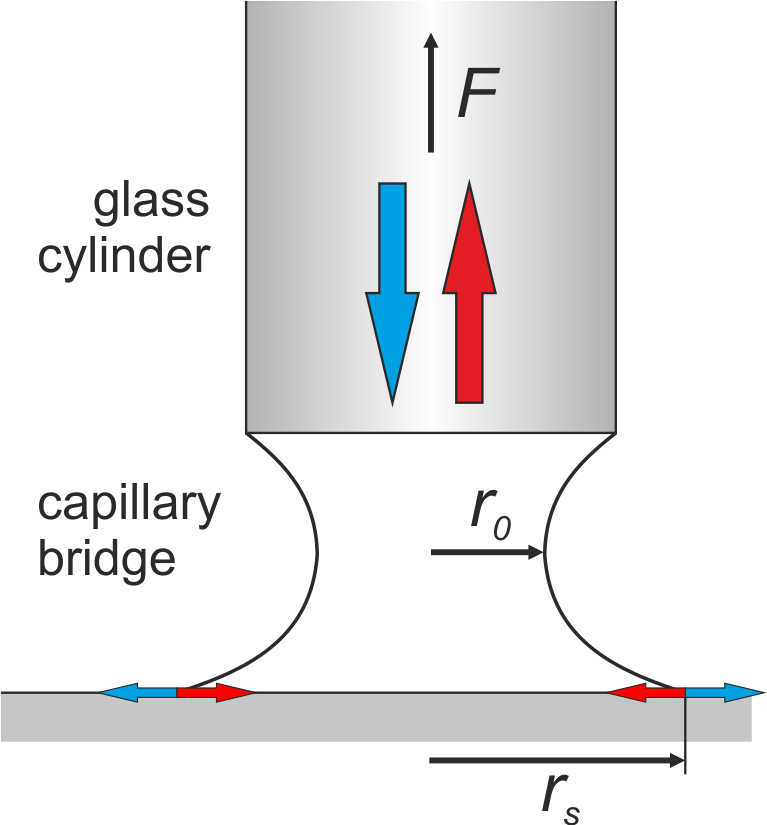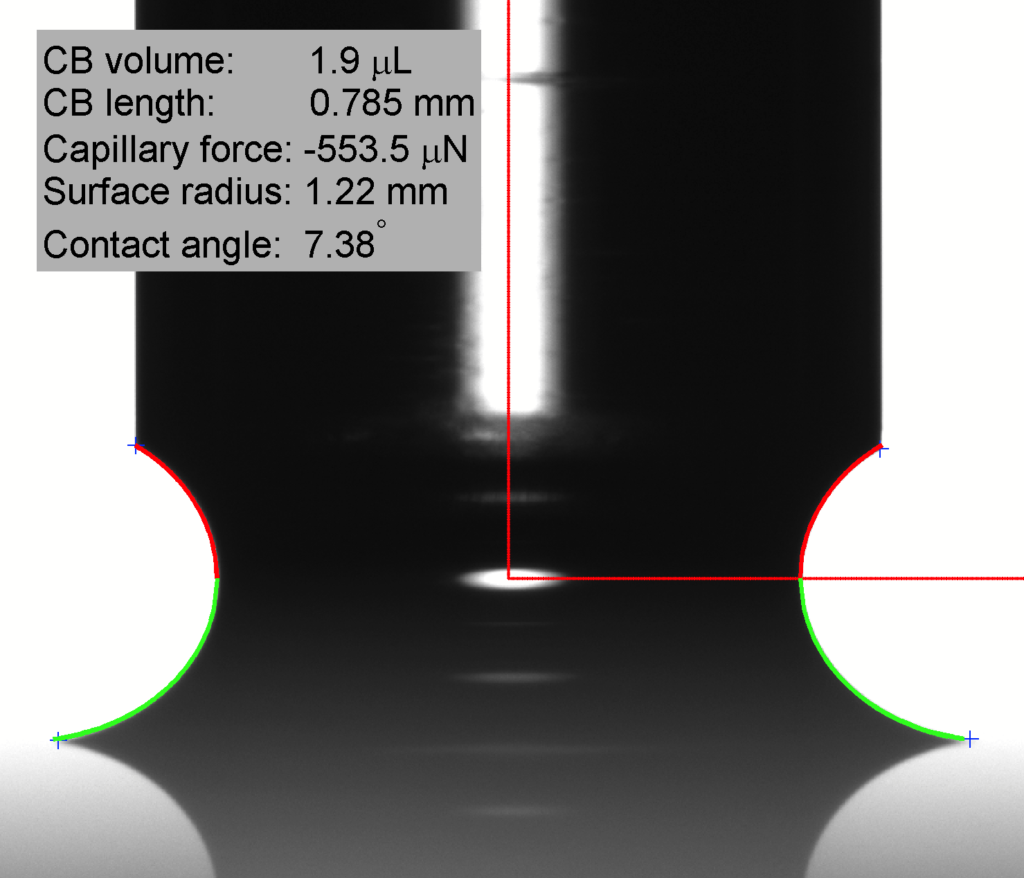Contact angle
Contact angle is the angle, which is observed between a liquid-vapor interface and a solid surface.

Its advancing value is measured after the advance of the three-phase contact line, e.g. after the increase the volume of a sessile drop. Similarly, the receding contact angle is formed after the backward movement of the contact line. These two values describe the wettability of the solid surface by the liquid, and they provide information e.g. on the roughness or heterogeneity of the solid.
Contact angle measurements have significance wherever the character of the contact between liquid and solid phases plays an important role.
Concept
The concept of this novel method is based on the capillary bridge of the test liquid formed between the base plane of a cylinder and the investigated surface. The contact line pins at the circular edge of the cylinder’s base. Advancing and receding contact angles can be determined by measuring the capillary force and the bridge geometry during the length change of the liquid bridge. The capillary bridge is formed from above, from a pendant drop, therefore the advancing contact line finds dry surface in all cases.

Apparatus
The arrangement of the laboratory-built apparatus is similar to a contact angle goniometer: uniform illumination, closed sample chamber with saturated vapor of the test liquid, and a camera with appropriate optics. Therefore, the setup is suitable also for sessile drop and captive bubble measurements. The additional element is the cylinder attached to a force balance, which measures the capillary force with the resolution of 0.1 μN. The force balance, together with the liquid dosage can be moved vertically by a precise linear stage.

Evaluation
The actual contact angle is calculated analytically from the capillary force (F), the radius of the neck or haunch (r0), and the surface radius (rs, i.e. the radius of the contact line). The two latter geometric values are determined by automated analysis of the image of capillary bridge.

Unique properties
The CBP method combines the accuracy of the Wilhelmy Balance method and the simplicity and general usability of the Sessile Drop method, without their drawbacks and limitations. Very low contact angles can be measured with high precision without prewetting the investigated surface, moreover, a small volume of test liquid (1.5-2 μL) is enough. The closed sample chamber provides equilibrium conditions.
New effect on superhydrophilic surfaces: the readvancing phase
The measurement starts with a pendant drop. After the formation of the liquid bridge, the contact line advances in the approaching phase, then the contact line recedes but it starts to advance again in the retraction phase after a given point. The bridge is in equilibrium at each stage, the images were captured after the waiting time. The advancing and receding contact angles are equal within their standard deviation: 4.7° ± 0.3° and 4.5° ± 0.3°, respectively. The measured contact angle in the readvancing phase, i.e. the readvancing contact angle is much lower, its value is 1.0° ± 0.1°. When the receding contact line starts to advance again, it finds prewetted surface, therefore the resulted contact angle is much smaller. After the breakage of the capillary bridge, the complete wetting can be observed in the final video frame.
